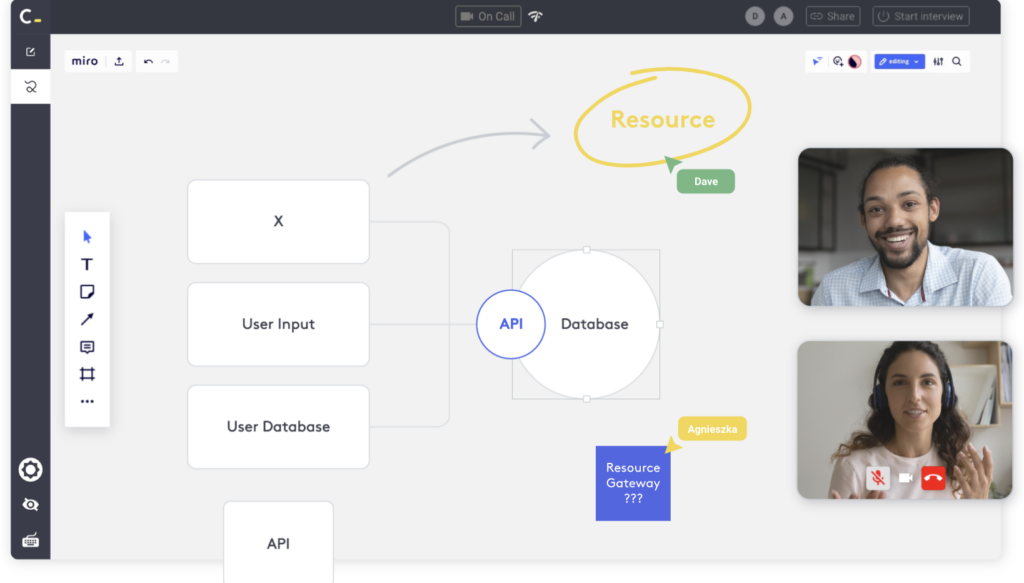Be the first to know
Sign up for a weekly dose of tech hiring news and updates.
A great candidate experience (CX) doesn’t happen by accident. As more than half (63%) of job seekers are likely to reject a job offer if they have poor candidate experience, you need your developer hiring strategy to be a finely tuned machine. Your tech recruitment process needs to be designed and executed to attract, engage, and seal the deal with the best tech candidates for your organization.
On top of the advice we’ve shared for improving your candidate experience, here we’re going to dive deeper into the strategies for hiring developers. We hope these insights and tips will help you improve your technical recruitment process and compete even more effectively for top tech talent.
Why a developer hiring strategy matters
Tech employers face plenty of challenges when it comes to hiring. Gitlab reports that most technical interviews don’t adequately assess a candidate’s actual on-the-job skills.
Using the right interview type and structure is crucial to learning what you need to know about each candidate to determine whether to move them forward in the technical hiring process. Similarly, the duration and complexity of your interview process matters.
Employers may inadvertently alienate candidates with interview processes that are too lengthy, complicated, or irrelevant to necessary job skills. Talent acquisition teams should look for opportunities to streamline the process, with an emphasis on boosting convenience for the candidate.

How to Improve Your Technical Recruitment Process Today
The first step in improving anything is, of course, to assess where you are. Review your current developer hiring strategy if you already have it documented. If you don’t, now is the time to set it out. Ensure your tech talent recruitment strategy includes key best practices.
Start by identifying who in your organization should be involved (remember that diversity matters!), what questions you’ll ask of every candidate, and what types of exercises or assessments you’ll use to gauge their technical ability.
Similarly, you’ll want to ensure you’re avoiding any missteps that could turn talent off, especially early in the tech recruitment process. Ask yourself: are you making any of these common technical recruitment process mistakes and, if so, what can you change to steer clear of them?
Now that you’ve identified some areas of opportunity in your current strategy for hiring developers, we can move on to the next four steps in improving your approach and get you closer to better outcomes.
1. Utilize Virtual Whiteboarding in Technical Interviews
Remote tech recruiting presents some challenges when hiring for roles that have often relied on tried and true in-person methods. Virtual whiteboarding enables employers to replicate traditional in-person assessments while providing a user-friendly way for candidates to show off their talents.

This tool allows interviewers to connect with candidates via video and voice to run live coding exercises in a way that feels more natural and helps interviewers make a real human connection with the candidate.
2. Create a Transparent CX
Creating a candidate experience that is smooth and transparent may seem like a daunting task. It’s not something you can achieve overnight, but taking simple steps can help you lay a solid foundation to build on.
Start by setting clear expectations to every candidate with accurate job descriptions and continue communicating expectations throughout the technical recruitment process. Make sure to follow through on those expectations, which builds trust.
Secondly, communicate your commitment to diversity, equity, and inclusion (DEI) by sharing your DEI initiatives in your recruiting content. Throughout your interactions with candidates, communicate consistently and regularly to avoid them feeling like they are not a priority.
Read more like this: Fast Ways to Promote Diversity & Inclusion In Your Remote Tech Hiring.
3. Mitigate Bias in Tech Talent Recruitment
Now more than ever, job seekers are paying attention to which employers actively work to reduce bias in the technical hiring process and which do not. And not just some job seekers – according to Glassdoor, two-thirds (67%) of candidates seek out diverse organizations when considering their next employer.
Shifting to skills-based job descriptions, leveraging virtual recruiting to cast a wider net, and adopting remote and hybrid work arrangements can all help you mitigate bias in your hiring process – as can the implementation of AI and coding assessments for developer roles.
4. Develop Scalable and Remote-Friendly Hiring
Part of investing in improving your developer hiring strategy is about future-proofing your recruiting — at least inasmuch as anyone can. Using tools and processes that are scalable and remote-friendly will help your team remain flexible in the face of whatever future challenges lie ahead.
Hiring the Best Developers Starts with a Smart Strategy
In the tech industry, hiring the right talent with the right skills and potential for your organization is key to surviving and thriving in an ever-changing world.
Building a sustainable business relies partly on hiring candidates who are a good fit for your team and bring new perspectives and capabilities that allow you to continue creating innovative solutions for your customers.
Spending some time and energy working to improve your developer hiring strategy helps you work toward this goal and create teams designed to win.
Want more insights on building diverse engineering teams & tech hiring trends? Sign up for our newsletter & stay informed.
